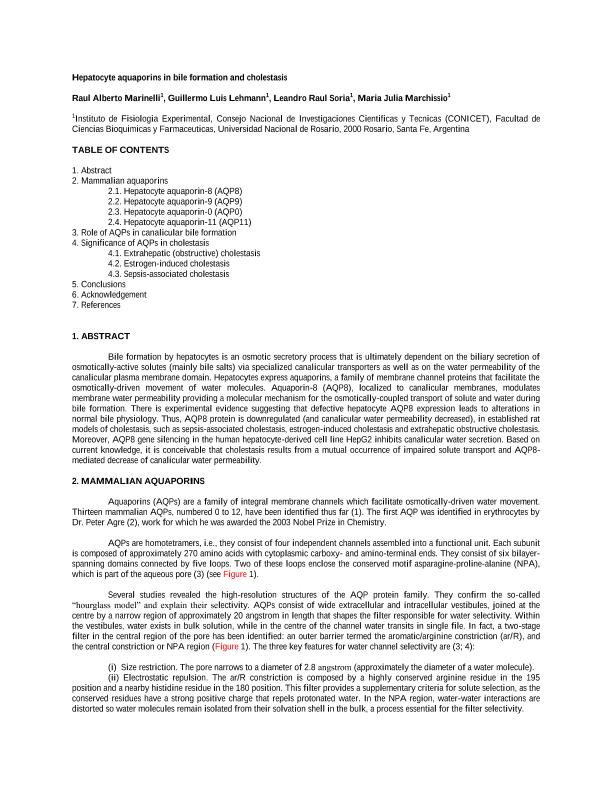Artículo
Hepatocyte aquaporins in bile formation and cholestasis
Fecha de publicación:
06/2011
Editorial:
Frontiers In Bioscience Inc
Revista:
Frontiers In Bioscience-landmark
ISSN:
1093-9946
e-ISSN:
1093-4715
Idioma:
Inglés
Tipo de recurso:
Artículo publicado
Clasificación temática:
Resumen
Bile formation by hepatocytes is an osmotic secretory process that is ultimately dependent on the biliary secretion of osmotically-active solutes (mainly bile salts) via specialized canalicular transporters as well as on the water permeability of the canalicular plasma membrane domain. Hepatocytes express aquaporins, a family of membrane channel proteins that facilitate the osmotically-driven movement of water molecules. Aquaporin-8 (AQP8), localized to canalicular membranes, modulates membrane water permeability providing a molecular mechanism for the osmotically-coupled transport of solute and water during bile formation. There is experimental evidence suggesting that defective hepatocyte AQP8 expression leads to alterations in normal bile physiology. Thus, AQP8 protein is downregulated (and canalicular water permeability decreased), in established rat models of cholestasis, such as sepsis-associated cholestasis, estrogen-induced cholestasis and extrahepatic obstructive cholestasis. Moreover, AQP8 gene silencing in the human hepatocyte-derived cell line HepG2 inhibits canalicular water secretion. Based on current knowledge, it is conceivable that cholestasis results from a mutual occurrence of impaired solute transport and AQP8-mediated decrease of canalicular water permeability.
Archivos asociados
Licencia
Identificadores
Colecciones
Articulos(IFISE)
Articulos de INST.DE FISIOLOGIA EXPERIMENTAL (I)
Articulos de INST.DE FISIOLOGIA EXPERIMENTAL (I)
Citación
Marinelli, Raul Alberto; Lehmann, Guillermo Luis; Soria, Leandro Raul; Marchissio, Maria Julia; Hepatocyte aquaporins in bile formation and cholestasis; Frontiers In Bioscience Inc; Frontiers In Bioscience-landmark; 16; 7; 6-2011; 2642-2652
Compartir
Altmétricas




